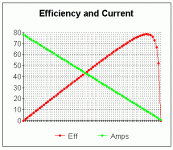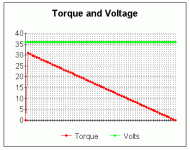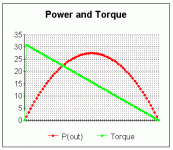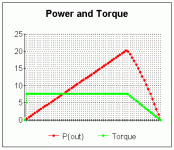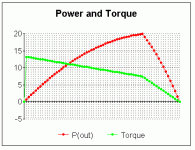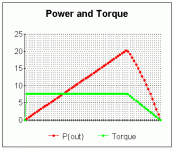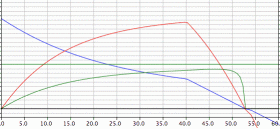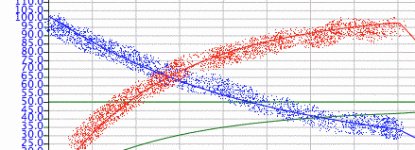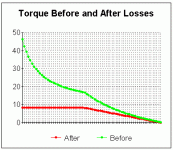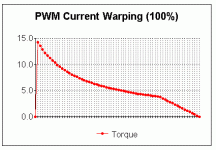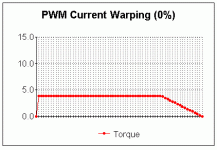safe
1 GW
- Joined
- Dec 22, 2006
- Messages
- 5,681
The formulas for an electric motor are very straight forward. In order to plot the performance of an electric motor you need to know certain constants such as the "No Load" amps and speed, the electrical constants for voltage and resistence of the motor and the maximum voltage you plan to use. I'm going to wait and see if anyone wants to get into the actual formulas on a spreadsheet before getting into them. Instead I want to go at this from a "high level" of just looking at the charts that these motors produce.
The first set of charts will be for an "Uncontrolled Motor" which means that it has no controller limiting the voltage. In real life you won't likely be experiencing such a motor because it's not very efficient over the full powerband. So let's look first at these charts:
Note: All charts read from 0 rpms on the left to max rpms on the right and the values have been adjusted to fit the charts, so don't obsess on exact numbers as a lookup, they are often scaled to fit... but the shapes are all correct, which is the important part.
The first set of charts will be for an "Uncontrolled Motor" which means that it has no controller limiting the voltage. In real life you won't likely be experiencing such a motor because it's not very efficient over the full powerband. So let's look first at these charts:
Note: All charts read from 0 rpms on the left to max rpms on the right and the values have been adjusted to fit the charts, so don't obsess on exact numbers as a lookup, they are often scaled to fit... but the shapes are all correct, which is the important part.


